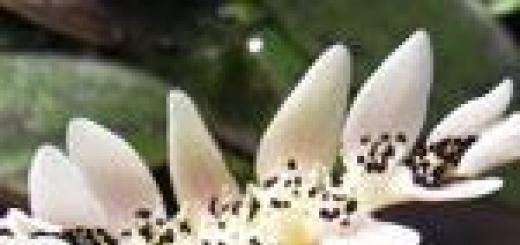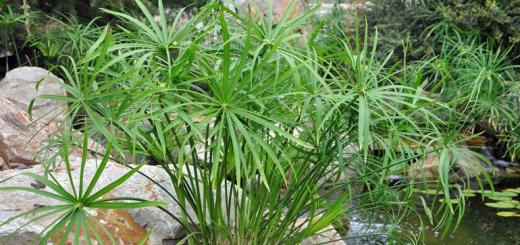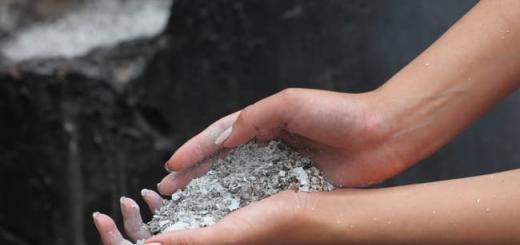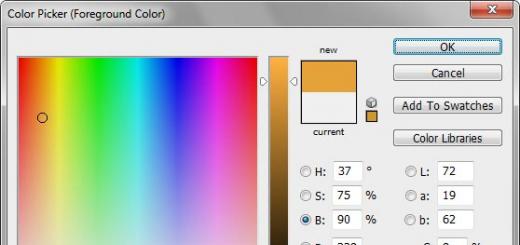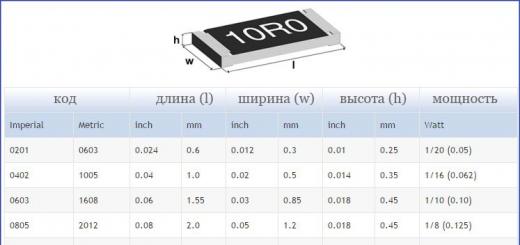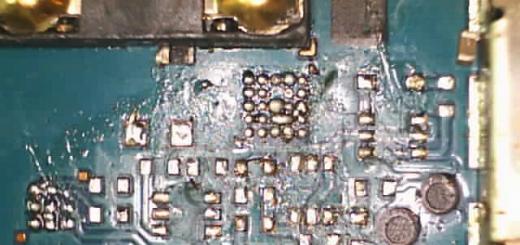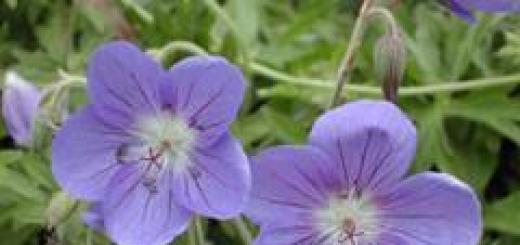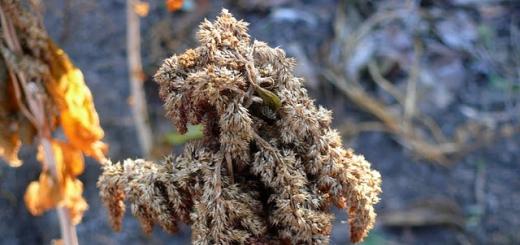Calamus is a perennial aquatic plant. The genus has only a few species, the most popular being a. ordinary (marsh), cereal.
 Aponogeton (water hawthorn) is a perennial deep-sea plant. There are about 25 varieties of the plant. Water hawthorn grows advantageously
Aponogeton (water hawthorn) is a perennial deep-sea plant. There are about 25 varieties of the plant. Water hawthorn grows advantageously
 Marsh flower (Nymphaeum coryfolia) is a perennial deep-sea plant. The plant spreads very well, is unpretentious, and is perfect for pond design. Nymphaeum colifolia is a very unusual plant; all its components are taken as if they were taken from other plants.
Marsh flower (Nymphaeum coryfolia) is a perennial deep-sea plant. The plant spreads very well, is unpretentious, and is perfect for pond design. Nymphaeum colifolia is a very unusual plant; all its components are taken as if they were taken from other plants.
 There are not so many beautifully flowering plants that live on the surface of the water surface of lakes or ponds. Perhaps, except for royal lotuses and sunny water lilies, rarely anyone remembers other names. Meanwhile, the elegant Brasia is ready to compete with any aquatic plant with its spectacular appearance.
There are not so many beautifully flowering plants that live on the surface of the water surface of lakes or ponds. Perhaps, except for royal lotuses and sunny water lilies, rarely anyone remembers other names. Meanwhile, the elegant Brasia is ready to compete with any aquatic plant with its spectacular appearance.
 Watercolor or frogwort is a perennial aquatic plant. The genus has only two species, the most common in. ordinary or froglike.
Watercolor or frogwort is a perennial aquatic plant. The genus has only two species, the most common in. ordinary or froglike.
 Water buttercup or mulberry is used for landscaping artificial ponds. The plant is a perennial and does not require special care.
Water buttercup or mulberry is used for landscaping artificial ponds. The plant is a perennial and does not require special care.
 Wolffia is an unpretentious aquatic plant; it is often bred for aquariums, as a shade plant and fish food. The plant is ideal for landscaping artificial ponds, especially if fish live in the pond.
Wolffia is an unpretentious aquatic plant; it is often bred for aquariums, as a shade plant and fish food. The plant is ideal for landscaping artificial ponds, especially if fish live in the pond.
Aquatic plants growing in natural and artificial reservoirs not only decorate them, but also perform the functions of cleaning and creating biological...
From Masterweb
02.06.2018 22:00Aquatic plants or hydrophytes growing in natural bodies of water not only decorate them, but also perform the functions of cleaning and creating a biological microclimate. Using them when landscaping a pond or swimming pool on the territory of a country house or garden plot will help decorate the landscape.
Adaptation of plants to an aquatic environment
In any pond, river or other body of water there are always many different plants that grow and reproduce well in their natural environment. They are characterized by leaves with a large surface, sometimes dissected. The root system is usually weak and is designed to be fixed to the bottom soil; some species do without roots. The stems have cavities and a system of intercellular spaces that help consume oxygen when immersed in water, which also keeps them afloat.
Hydrophytes are divided into several species, each of which has its own habitat and performs a specific function in a given biozone. They are also characterized by a method of reproduction in which seeds spread under water: when they fall to the bottom, they begin to germinate.
Types of aquatic plants differ from the area where they are located:
- coastal, which are located along the coast, exposing some of the stems and leaves above the surface: horsetail, arrowhead, cattail, reeds, reeds;
- semi-aquatic: irises, pondeteria, susak, marigolds, etc.;
- aquatic, whose entire life is spent at the depth of the reservoir: water moss, hornwort, chara, nitella;
- floating on the surface or in the water column: pistia, fontinalis moss, water buttercup, duckweed, watercolor, marsh flower, water chestnut;
- deep-sea or submerged, which take root in the ground, and above the surface there are flowers: egg capsule, water lily, orontium, lotus;
- oxygen generators - plants immersed in water and actively releasing oxygen necessary to ensure the vital activity of all inhabitants of the reservoir: water star, hornwort, marsh turcha, spicate urut.
Plants of natural reservoirs
All natural bodies of water are surrounded by thickets of coastal vegetation, which grows in stripes along the banks of rivers, lakes and ponds. The only exception may be the leeward side, which is devoid of large plantings.
Various types and forms of aquatic plants are grouped or arranged in stripes depending on the direction of flow or depth. Along the shore, as a rule, there are dense thickets of reeds or reeds with hard leaves. Fish prefer to live among plants with softer stems and leaves.
The species composition of underwater plants in natural reservoirs can change quite significantly over time, since some of them deplete the soil, release harmful substances into the bottom, and then die. They are also influenced by climate or weather changes, anthropogenic impact, and environmental pollution.

Coastal
Plants growing along the perimeter of the reservoir define the border with the shore. These include:
- The aquatic plant arrowhead (sagittaria or common bogwort) is widely used for landscaping ponds, its root is represented by cord-like shoots with rounded tubers, is immersed in water, the stem has a porous tissue filled with air bubbles, its length is 0.2-1.1 m. Above-water part has a petiole, the leaves are triangular in shape, similar to an arrowhead up to 30 cm long. In mid-June, sagittaria blooms and blooms until the end of summer with white flowers with a spherical middle; inside the petal there may be red or cherry spots. In total, there are about 40 species of mireweed, including decorative varieties. Many of them are used to decorate man-made ponds and go well with other aquatic plants.
- Reed or ocheret is a herbaceous plant from the Poaceae family, which is found in the middle zone in all reservoirs with a depth of up to 1.5 m, has hard stems that repel fish, and has long rhizomes, from which long hollow stems up to 5 m in height grow. The reed inflorescence is a violet-silver panicle. Used in oriental medicine.
- Skirpus or reed is a perennial pond plant, growing up to 3.5 m tall, has a cylindrical strong stem and paniculate/capitate inflorescence, prefers swampy places. Many people confuse it with reed.
- Cattail, which is often confused with reeds, has a rigid stem with long leaves, at the end of which there is a beautiful brown velvet ear with seeds. Grows in reservoirs up to 1.5 m deep.

Near-aquatic
Submerged or semi-aquatic plants are common in the wild and are available for cultivation in artificial ponds.
Examples of aquatic plants growing in shallow or near water:
- Swamp iris - distinguished by bright yellow flowers with a brown pattern, prefers sunlit areas and fertile soil, stem height up to 1.5 m, suitable for ponds, planted to a depth of 40 cm.
- Smooth iris - blooms from June to October with blue or purple flowers, up to 1 m high, goes well with other aquatic plants.

- Marigold (Caltha) (swamp, thin-cupped, fistula, etc.) is a winter-hardy, unpretentious plant (poisonous!), prefers sunny places, tolerates flooding up to 20 cm, has golden, white-yellow flowers, planting depth depends on the variety (20-120 cm).
- Pondetheria - decorated with blue or purple flowers, loves the sun and nutritious soil, a capricious and non-winter-hardy plant (transported indoors for the winter), planting depth is about 8 cm.
- Susak (Butomus) is an unpretentious plant, blooms with small pink-crimson flowers, grows very quickly, planting depth is 10 cm.
- Amphibious knotweed (Persicaria) - blooms all summer with bright pink small flowers arranged in a cone, when planting they are buried down to 0.5 m, it is better to plant in containers, winter-hardy and unpretentious.

Oxygenators
One of the most important types of underwater plants that supply the entire body of water with additional oxygen. Many of them are also used as food for fish. Their advantage is also the improvement of sanitary conditions and biological purification of water.
Names of aquatic plants-oxygenators:
- Common marsh grass (Callitriche), also called water star.
- Urut (Myriophyllum) belongs to the perennials of the Slanoyagodnikov family; it has shoots rising above the water and a creeping rhizome. Long stems (up to 1.5 m) are covered with thin leaves and form an elegant lace of thickets under water, for which it is called “pinnate”. It is grown as a coastal plant, propagated vegetatively, its parts can be planted directly into the ground to a depth of 1.2 m in the spring and summer. Looks great in small ponds, where it forms beautiful patterns under water.

- Turcha (Hottoni) - is a relative of primroses, has about 100 species in the Primrose family. The second name - “water feather” is given for the rosette consisting of dissected feathery leaves floating in the water. In the summer months, flower stalks appear, which rise 15-30 cm above the water and are decorated with flowers; in the fall it dies and overwinters at the bottom in the buds.

- Hornwort (Ceratophyllum) is dark green and has a long stem that branches at the top. The leaves are dissected into segments, grows at a depth of up to 9 m, has unique aquatic pollination, thanks to which it is widely distributed in the reservoirs of Russia and other European countries. Instead of roots, it has stems that hold the plant on the ground in the silt. In autumn, the upper part dies off, and the shoots with buds overwinter at the bottom of the reservoir.
- Elodea - belongs to the perennials of the Vodokrasaceae family, lives entirely under water, shoots branch up to 1 m long, and has small leaves located throughout the stem. It blooms very rarely with small white flowers with red sepals.
floating plants
Such plants can be successfully used to decorate an artificial pond. They do not require any maintenance, you just need to carefully monitor the growth rate so that the pond is not completely overgrown with them. The difference between these aquatic plants is that the roots are not fixed and therefore float freely, while the leaves and flowers are located on the surface.
The most popular floating ones:
- Duckweed covers the entire surface of the reservoir with a green carpet and is a small plant consisting of stems held together in several pieces (leaves). It blooms only in artificial reservoirs, reproduces vegetatively when young leaves are separated from the mother leaves, and overwinters at the bottom.
- Watercolor (Hydrocharis) is a perennial plant with small, round leaves at the base in the shape of a heart, from which fleshy roots hang down. The flowers are small, white, located 3-5 cm above the surface of the water above the leaves.

- Azolla (Carolina or fern) came to Europe from the tropical reservoirs of America, resembles openwork moss, grows very quickly, which is why it has to be removed from the pond with a net, and by autumn the leaves acquire a reddish color.
- Eichhornia, which has the name “Water hyacinth,” is a floating, heat-loving plant with dark green leaves that blooms in late summer with lilac-blue or yellow flowers, similar to orchids. In the fall, it must be moved indoors to an aquarium, placing it in a ring float, where the plant successfully overwinters. According to scientists, it has fantastic abilities to process organic pollutants (that is, it loves dirty water bodies).

- Water chestnut (Chilim) is an annual, has original fruits decorated with horns (for which it received the names “devil’s” and “horned”), with which it clings to the bottom. Floats thanks to leaves that have swellings with an air layer. It reproduces by self-pollination, but only in regions with a warm climate: in the second half of summer, white flowers appear, protruding above the water, and by autumn, hard drupes of 1-15 pieces ripen. on each plant, which gradually sink to the bottom.
deep sea
These aquatic plants have rhizomes buried in the bottom of the reservoir, and stems, leaves and flowers are located above its surface. Their main diet consists of organic matter in the bottom soil. The leaf blades are usually large in size. This creates shade and prevents the water from heating, which helps prevent the active proliferation of small algae. The main advantage of deep-sea species is their beautiful flowering.
Some types of deep-sea plants:
- Orontium or “Golden Club” (Orontium) is a perennial with green-blue leaves, silvery below, in April-May it blooms with inflorescences-cobs sticking out of the water (12-15 cm long), consisting of small yellow flowers, similar to white-yellow pencils.
- Nuphar (Nuphar) is a perennial that is widely used for landscaping large bodies of water that have shade. Its roots are fixed in the bottom soil, and leaves and yellow flowers floating on the surface, located on thick peduncles.

Water lily and lotus
These 2 types of deep-sea plants are among the most spectacular and spectacular, having bright beautiful flowers and large leaves. When planted in a home pond, they will become a wonderful decoration.
The water lily flower (Nymphaea) takes its name from water nymphs in various European mythologies. There are 35 species and are divided into 2 groups: tropical and winter-hardy. The latter are suitable for growing in open reservoirs in the central and northern parts of Russia, preferring sunny places with standing water. The required area for each plant is 0.5-4 square meters. m.
The most common winter-hardy varieties of water lilies:
- The white water lily, which is often found in natural reservoirs, has powerful roots up to 5 cm thick; petioles and peduncles are located on the surface, which begin flowering in May and continue until frost. The leaves are round and wide up to 25 cm, the flowers are snow-white, each lasts 4 days, after which the fruit sets under water. After ripening, the seeds spill out of the boxes and gradually sink to the bottom, where they then germinate.

- The flower of the fragrant water lily is white, emitting a pleasant aroma; the leaves are bright green in color, turning red at the bottom over time. Some varieties bloom yellow (spotted Sulphurea), pink or cream flowers.
- Hybrid water lily (nymphea) - becomes a decoration of any body of water, thanks to its beautiful flowers and heart-shaped bright leaves (some with spots or red tints).

Lotus (Nelumbo) is a perennial aquatic plant, the leaves of which are located both under water and on the surface, funnel-shaped and large, with a diameter of up to 70 cm. The lotus is decorated with large fragrant flowers (up to 30 cm) with pink-white petals, placed brightly in the center -yellow stamens. The fruits are dark brown in color with 30 seeds, the germination of which lasts for tens and hundreds of years. In the East, this plant is worshiped and ancient legends and traditions are told. In Europe, it has been grown in greenhouses and artificial ponds since the 18th century.

Creating a reservoir: rules
Using aquatic plants to decorate an artificial pond in a garden plot or on the territory of a country house will create a unique natural landscape and provide the opportunity to admire beautiful leaves and flowers throughout the warm season.
Regardless of the size of such a reservoir, it is necessary to select several types of plants with different flowering periods, sizes and shapes of leaves, also taking into account their height and planting depth. The main rule is to maintain biobalance in an artificial pond, in which for the safe coexistence of all plants, fish and microorganisms it is necessary to ensure that the vegetation covers the water surface by half or more.
The center of the pond is given over to beautifully flowering plants - water lilies, the variety of which is selected based on the area of the pond. Coastal species (arrowhead, calamus, susak) are planted along the edge; forget-me-nots or marigold are planted in shallow water; moisture-loving plants (sedges, irises, daylilies) with a strong root system can be placed on the soil along the edge, which will help preserve the shore from erosion.
Free-swimming species (duckweed, teloris, vodokras) under favorable conditions multiply very quickly and can occupy the entire surface, so they must be periodically removed with a net.

Planting aquatic plants in a pond
Landscaping an artificial reservoir can be done in 2 ways:
- planting plants in the ground in depressions made along the perimeter of the pond, which is more suitable for steep banks;
- in special containers that are placed on stands or ledges; this method allows them to be moved if necessary.
The planting depth depends on the type: for water lilies it is up to 1.5 m, for coastal or marsh plants - 5-20 cm. Optimal planting time: from April to July. Oxygenators are usually planted first, water lilies are planted when the water is heated, then floating ones, and the coastal zone is settled last.
If desired, fish can be released into the pond, but only after 4-6 weeks, when all the plants have taken root and the water has settled.
Basic rules for planting aquatic plants and constructing a pond:
- place it away from deciduous trees so that falling parts do not clog the pond;
- ideal is sunlight in the morning and afternoon, and at noon the plants will be comfortable in a little shade;
- It is periodically necessary to thin out fast-growing species so that they do not obscure other plants and the surface of the reservoir.
With the correct selection of species and varieties of hydrophytes, their growth zones and flowering periods, the effort required to care for an artificial reservoir can be reduced. Bright greenery and plants blooming throughout the warm season will decorate the entire surrounding landscape.
Kievyan Street, 16 0016 Armenia, Yerevan +374 11 233 255
Recently, it has become very fashionable among gardeners to create mini-reservoirs in their garden plots: ponds, lakes, and other waterways. It goes without saying that in this case one cannot do without coastal aquatic vegetation, because it is the main decoration of reservoirs. There are many thousands of species of plants living in water, but not all of them are suitable for growing in the middle zone. On this page you will learn the names of aquatic flowers and plants of the coastal zone, adapted to our conditions. You can also get acquainted with the description of aquatic plants and see their photographs.
Plants of the aquatic environment and coastal zone of water bodies
Calamus (ACORUS). Family Araceae.
Air (Image root) (A. calamus)- rhizomatous perennial 50-80 cm high with straight sword-shaped leaves. Small greenish inflorescences-cobs are not interesting.


In the variety "Variegatus" the leaves are green with yellowish stripes along the edges (they are pinkish in spring).
Growing conditions. Near water, planting depth 8-20 cm.
Reproduction. By dividing the bush (in spring).
This coastal plant is used to decorate the banks of reservoirs.
Watch (MENYANTHES). A family of shift workers.


Three-leaf watch (M. trifoliata)- a perennial with a thick, long, branched rhizome, growing in stagnant water, along the marshy banks of rivers and lakes in the temperate zone of Eurasia. Blue-green trifoliate leaves on long petioles give the plant a decorative appearance. The flowers of this coastal aquatic plant are white and pink, collected in a dense raceme.
Growing conditions. Low banks of reservoirs, shallow waters.
Reproduction. Sections of rhizomes with a renewal bud (at the end of summer). Planting density - 12 pcs. per 1 m2.
Used to decorate ponds.
Mertensia (MERTENSIA). Borage family.
Rhizomatous perennials, mainly growing along the seashores in North America and the Far East, are also found in the middle zone. The leaves are grayish-blue, lanceolate; inflorescence - a curl of bright blue flowers.
Types and varieties:

Mertensia ciliata (M. ciliata)- height 4050 cm.


Mertensia marine (M. maritima)- height 10-15 cm.


Mertensia virginiana (M. virginica)- height 40 cm.
Growing conditions. Moist, poor sandy soils in sunny locations.
Reproduction. By seeds (sowing in spring), dividing the bush (in spring). Juveniles, divide and replant in the 3rd-4th year. Planting density - 25 pcs. per 1 m2.
Sedge (CAREX). The sedge family.
Perennial rhizomatous herbs with dense, narrow, like cereal, leaves and thin spikelets. Numerous species are widely distributed throughout the world, but only a few are used as ornamental plants.
Types and varieties:


Sedge Buchanana(C. buchananii)- 60 cm high, brownish leaves.


Sedge Morrow (C. morrowii), variety "Variegata" - height 50 cm.


rusty spotted (C. siderosticta) And hairy (C. pillosa)- forest sedges.


drooping sedge (C. pendula)- up to 100 cm high, semi-aquatic.
Growing conditions. This coastal plant of water bodies is planted in areas with any soil and sufficient moisture. Forest sedge species prefer shady areas.
Reproduction. By seeds (sowing in spring) and dividing the bush (late summer). Planting density - 9-12 pcs. per 1 m2.
Cattail (TYPHA). Cattail family.
This is coastal aquatic vegetation with a creeping thick rhizome, 100-200 cm high. The leaves are broadly linear at the base of the stem. These are plants that grow near water along the banks of rivers and other bodies of water in the temperate zone of Eurasia, often forming thickets.
Types and varieties:


Broadleaf cattail (T. latijoiia)— height 100-150 cm; Cattail angustifolia (T. angustifolia)-height 100-150 cm.
Growing conditions. Wet shores of reservoirs.
Reproduction. By dividing the bush (in spring and late summer).
Huttinia (HOUTTUYNIA). Family Saururidae.
Huttinia cordate(H. cordata)— A new plant for central Russia, but it is worthy of the difficulties associated with its cultivation. The species itself, which came into cultivation from the coastal meadows of the south of the Far East, is rarely grown.


Varieties of interest:"Chameleon" - with leaves along the edges of which white, yellow, red spots are scattered, and "Plena" - with double flowers.
The plant is creeping, quickly forms a thicket 20-50 cm high. It blooms rarely and not abundantly in central Russia.
Growing conditions. Semi-shaded shores of reservoirs with clay soils.
Reproduction. In spring, a piece of rhizome with a renewal bud. Planting density - 16 pcs. per 1 m2.
Waterfoil (HYDROPHYLLUM). Waterfolia family.
Long-rhizome perennials from the moist forests and grasslands of eastern North America with large lobed leaves and a fluffy, branched inflorescence of pink-purple flowers. Adapted to Russian conditions, where it is planted along the banks of reservoirs.
Types and varieties:


Canadian waterfoil (H. canadense)- leaf rounded-lobed; Virginia waterfoil (H. virginianum) has an elongated lobed leaf.
Growing conditions. This coastal plant prefers semi-shaded to shady locations with moist, rich soils.
Reproduction. Sections of rhizomes with a renewal bud at the end of summer. Planting density - 16 pcs. per 1 m2.
Spleen (CHRYSOSPLENIUM). Saxifraga family.


Spleenwort alternate-leaved (Ch. alternifolium)- perennial with a fleshy stem, height 5-15 cm, leaves in the basal rosette are light green, thickened, rounded-beam-shaped; the inflorescence is flat, corymbose, the flowers are golden-green. They form thickets in damp, shady places.
Growing conditions. Semi-shaded places near reservoirs, in depressions of the relief.
Reproduction. By seeds (sowing in autumn), dividing the bush (in summer). It grows weed on wet soils. Planting density - 36 pcs. per 1 m2.
Use only in areas that imitate natural thickets. Unstable decorative, good only in early spring.
Coastal aquatic vegetation: plants living in water and on the shore
This section presents photos of aquatic plants with names and descriptions, suitable for growing in shallow waters of fresh water bodies and along their banks.
Whitewing (CALLA). Family Araceae.


Swamp whitewing (C. palustris)- a rhizomatous perennial growing along the banks of reservoirs in the temperate zone of the Northern Hemisphere. Leaves are basal on long petioles, heart-shaped, rounded. The flowers are collected in an inflorescence-cob, covered with a white ovoid veil.
Growing conditions. This light- and moisture-loving plant is grown both in shallow waters of fresh water bodies and along their banks.
Reproduction. Propagated by seeds, sowing in wet soil immediately after collection. It is best to divide the rhizomes at the end of summer. Planting density - 7 pcs. per 1 m2.


Look at the photo: this aquatic plant provides an early spring effect as part of mixed groups with summer-flowering plants; interesting in rock gardens, in flower beds, where annuals are then planted.
Sitnik (JUNCUS). Sitnikov family.
Perennial rhizomatous moisture-loving herbs. The leaves are grass-like, decorative capitate or paniculate inflorescences.
Types and varieties. S. acutiflorus (J. acutiflorus) - up to 100 cm high, paniculate inflorescence; With. spreading (J. effusus) - up to 150 cm high, inflorescence fascicle-paniculate; With. xiphoid (J. ensifolius) - 20-30 cm high, inflorescence capitate, dark brown; With. glaucous (J. glaucus) - 60-90 cm high, bluish leaves.
Growing conditions. Sunny shores of reservoirs at a depth of 0-5 cm.
Reproduction. Rhizome sections in spring or late summer.
Buttercup (RANUNCULUS). Ranunculaceae family.
A large genus, the species of which are widely found everywhere, but only a few of the most decorative perennials are used in culture. Among them there are also aquatic plants, but more often buttercups grow on the shores of reservoirs.
Types and varieties:


Aquatic and semi-aquatic: L. caustic (R. acris), variety “Multiplex” height 50-70 cm, water depth 0-10 cm.


Water buttercup(R. aquatilis)— water depth 40-100 cm; l. longifolia(R. lingua)- depth 0-20 cm, variety Grandiflora.”


Buttercup cappadocian (R. cappadocicus)- from the forests of the Caucasus, consistently decorative, forms thickets.
Growing conditions. Aquatic - in reservoirs with standing water and in shallow water; l. Cappadocian - in the shade.
Reproduction. By dividing the bush (in spring). Planting density - 25 pcs. per 1 m2.
Full (CYPERUS). The sedge family.


Galingale (C. longus)- a long-rhizome perennial that grows along the banks and in shallow waters (depth up to 20 cm) of standing and slowly flowing waters. If we talk about which aquatic plants are most common in central Russia, then the seaweed is mentioned most often. Its tall (60-120 cm) leafy stem rises above the water, bearing an openwork umbrella with long (10-40 cm) “rays” carrying a bunch of small brownish spikelets. Consistently decorative. Forms loose thickets.
Growing conditions. Reservoirs.
Reproduction. Sections of rhizomes with a renewal bud (at the end of summer).
Reed (PHRAGMITES). Poa family (grasses).


Common reed (P. communis)- long-rhizome tall grass (150-200 cm), forming thickets along the banks and shallow waters of reservoirs.
Growing conditions. Sunny and semi-shaded areas with wet soils, low banks of reservoirs. This coastal plant can also be grown in shallow water.
Reproduction. Sections of rhizomes with a renewal bud (spring, late summer). Planting density - 5 pcs. per 1 m2.
Perennial aquatic flowers and ornamental herbaceous plants
Aquatic flowers and plants are a real decoration of ponds. But herbaceous aquatic plants are no less interesting, attracting attention with their rich greenery.
Arrow leaf (SAGITTARIA). Chastukhov family.
These are aquatic flowers, which are rhizomatous perennials, rooted at a depth of 10-50 cm. The leaves are dark green, shiny, dense. Flowers in inflorescence are a sparse raceme.
Types and varieties:


Arrowhead Broadleaf(S. LatifoLia)- height 50-70 cm, flowers with a yellow center; arrowhead arrowhead (S. sagittifoLia) - height 30-50 cm, flowers with a red center.
Growing conditions. Planting in reservoirs with standing or slowly flowing water to a depth of 10-50 cm.
Reproduction. By seeds (sowing in spring in containers and then planting in water).
Chastukha (ALISMA). Chastukha family.
A perennial aquatic plant with beautiful ribbed leaves on long petioles. They bloom all summer. The flowers are small, with three petals, arranged in whorls.
Types and varieties:


Chastukha plantain (A. plantagoaquatica)- pink flowers; small-flowered chastuha (A. parviflora) - white flowers.
Growing conditions. These plants live in an aquatic environment in the shallow waters of natural reservoirs. Planting depth 5-10 cm.
Reproduction. By dividing the bush (summer) or seeds (spring).
Wetland plants growing near water
Marigold (CALTHA). Ranunculaceae family.


Marsh marigold(C. palustris)– a perennial wetland plant with a short rhizome. The basal leaves are entire, round, bright green, shiny. The flowers are bright yellow, as if varnished. Abundant seed production in July-August. More often in gardens, the double form of this species is grown - marsh marigold "Multiplex".
Growing conditions. Sunny places with clay soils that retain water well.
Reproduction. By dividing the bush at the end of summer. The bush grows slowly, so division is carried out after 6-7 years. It is propagated by freshly collected seeds; they germinate the following spring, but the seedlings bloom in the 5-6th year. Planting density - 9 pcs. per 1 m2.
An excellent plant for decorating the banks of reservoirs and in “natural garden” flower beds that imitate wet meadows. Here marigold is planted together with loosestrife, drooping sedge, knotweed, crayfish, etc.
Reed (SCIRPUS). The sedge family.


Bulrush (S. lacustris)- a perennial with a thick creeping rhizome 100-120 cm high, growing along the banks of reservoirs in Europe and North America. The inflorescence is paniculate, the leaves are subulate.
Growing conditions. Wet, low places along the banks of reservoirs.
Reproduction. By dividing the bush (in spring and late summer), by seeds (sowing before winter).
Swamp flower (NYMPHOIDES). A family of shift workers.


Marsh-leaved herb(N. peltata)- an aquatic perennial with a rhizome, rounded shiny leaves on long petioles and numerous flowers emerging from the leaf axil. The name of this aquatic plant speaks for itself - it prefers exclusively marshy areas.
Growing conditions. Reservoirs with standing or slowly flowing water, depth 20-100 cm.
Reproduction. By seeds (into the ground under water), by dividing the bush.
Used when decorating reservoirs.
Floating aquatic flowering and herbaceous plants
Watercolor (HYDROCHARIS). Family of watercolors.


Common watercolor (H. morsusranae)- a floating aquatic plant of standing or slowly flowing waters with developed shoots and rounded dense dark green leaves in rosettes on long petioles and white 15-30 cm, flowering all summer.
Growing conditions. Aquatic plant.
Reproduction. Seeds, rosettes of leaves.
Used in ponds.
Water chestnut (TRAPA). Water chestnut family.


Common water chestnut (T. natans)- annual aquatic herbaceous plants growing in slowly flowing waters. There are thread-like submerged leaves and a beautiful rosette of floating leaves.
Growing conditions. Reservoirs.
Reproduction. Place seeds (nuts) on the bottom of the reservoir in the fall.
Used to decorate natural reservoirs.
Egg pod (NUPHAR). The water lily family.


Yellow egg capsule(N. iutea)- a perennial aquatic flowering plant with a fleshy underwater rhizome and wide, dense, leathery leaves above the water. A large waxy flower appears above them in June. The name of these aquatic flowers is quite justified - the flower really resembles a water capsule. Widely distributed in natural reservoirs of the temperate zone.
Growing conditions. Ponds, lakes with standing or slowly flowing water, at a depth of 30-80 cm.
Reproduction. Seeds (sow freshly harvested), sections of rhizome with renewal bud (at the end of summer). Planting density - 12 pcs. per 1 m2.
Waterlily (NYMPHAEA). The water lily family.
The genus includes about 30 species of aquatic plants growing in water bodies of temperate and tropical zones.
Types and varieties. In the reservoirs of central Russia, white plant (N. alba) grows - a rhizomatous perennial with round, unequal leaves on long petioles floating on the surface of the water. The leaves are green above, reddish below.


Look at the photo of these aquatic flowers - they are all large, mostly white. They have a pronounced aroma.
Numerous varieties available k. hybrid (N. xhybrida):


"Gladstoniana", "Fire Opal"


"Hollandia", "Rose Arey" and etc.
Growing conditions. These aquatic flowering plants prefer ponds with standing or slowly flowing water and grow at a depth of 30-100 cm.
Reproduction. Seeds (in the fall to the bottom of the reservoir), sections of rhizomes with a renewal bud (at the end of summer in the soil of the reservoir). Planting density - 12 pcs. per 1 m2.
These ornamental aquatic plants are used to decorate ponds.
Aquatic plants of the coastal zone of the pond, growing in the water and on the shore
Susak (BUTOMUS). Susakov family.


Susak umbrella (B. umbellatus)- grows in water bodies of Europe and Asia. Height 60-100 cm. This is a common aquatic plant of ponds and lakes (bodies of standing water) with long linear-triangular leaves and a large terminal umbrella-shaped inflorescence of large pink flowers.
Growing conditions. This is a plant that grows both in water and on the shore.
Reproduction. Cuttings of rhizomes in spring and late summer.
Mannik (GLYCERIA). Poa family.


Mannik is the largest (G. maxima)- a tall (70-100 cm) perennial with a long creeping rhizome, forms thickets in coastal waters at a depth of 0-10 cm. The leaves are wide, with white stripes, blooms in July-August. The panicle is spreading. Manna is a plant that grows in the water of ponds and lakes, as well as in water meadows and near streams.
Growing conditions. Sunny and semi-shaded shores of reservoirs. It is also possible to plant lengthwise at a depth of up to 10 cm.
Reproduction. This plant of the coastal zone of the pond and shallow waters reproduces by cuttings of rhizomes with a renewal bud at the end of summer.
The benefits of indoor plants living in water are obvious to humans. Dry indoor air, especially in winter, when this indicator reaches critical levels, is harmful to the body and can cause poor health, decreased immunity and a provoking factor for the development of diseases. Plants that live in water help maintain optimal humidity levels for comfortable well-being without expensive devices. In addition, they create an atmosphere of natural comfort in the house for relaxation and recuperation.
This plant should probably be placed first on this list. With a very impressive exotic appearance, it is absolutely unpretentious and practically does not require maintenance - if only there was water, and the more, the better. Cyperus, which looks like the “skeleton” of an umbrella, is native to the swampy tropics of the African continent. It is most convenient to plant it in a small flowerpot, which, in turn, is placed in a deep tray or large decorative flowerpot so that the container with the cyperus is completely immersed in water. The container can be styled as a miniature pond.
Cyperus will not mind regular spraying, but will easily adapt to living in unfavorable conditions. But placing it in the open sun is highly not recommended; direct sunlight is more destructive for it than a persistent lack of light. The plant will suit an eastern or even northern windowsill quite well. Drying out the earthen coma is not allowed. Of the mineral fertilizers, nitrogen will be most useful.

Another moisture-loving guest from Africa who easily takes root in indoor conditions and loves water very much. Calla is completely unpretentious in terms of temperature and, despite its southern origin, is not afraid of even cold, unheated rooms. The large glossy leaves are decorative in themselves, but when the plant produces a peduncle with an elegant snow-white cover, it is impossible not to admire them.
However, you should know which calla lilies are suitable for year-round maintenance in a humid environment. All of them are divided into two large, very different groups - rhizomatous and tuberous. It is the first ones, with white bracts, that belong to plants that grow in water. The latter can be of very different colors and have a pronounced dormant period, which occurs in the winter months, and it is at this time that they require fairly dry conditions. Watering at this time should be limited; the rest of the time, the recommended humidity for their maintenance is 75-80%.

If, after calla lilies bloom, the ear is left to ripen on the peduncle, by the end of summer it will sink into the water, and the seeds that have ripened in it will produce new shoots.
The name itself with the prefix “hydro” indicates a plant that lives in water. The homeland of hydrocleis is the tropics of Central America, where it grows in abundance in warm bodies of water without fast currents. Its shoots are under water and have the ability to grow quickly, releasing round, smooth leaves to the surface, as if covered with wax, and gradually forming a thick green carpet. At the peak of the warm season, hydrocleis blooms with bright yellow delicate inflorescences that rise 10 cm above the water level. In indoor conditions, a container with water is sufficient for this plant, since its stems are able to grow and develop without even reaching the bottom. If they reach the soil layer, they quickly take root and the shoots grow even more rapidly.

A semi-submerged plant with leaves of different structures, which can grow either free floating or attached to the ground. It is a herbaceous perennial, some varieties of which are widely used in aquarium culture (Eichornia azure, thick-legged, variegated). Large, very decorative flowers in a lilac-blue palette rise high above the water and bloom for a very short time, no more than 2 days. After the bud withers, the peduncle is again lowered into the water, where seeds are formed from the ovary. After ripening, they float to the surface.

If the above-ground part of the plant is of greater interest, rather than its underwater part, it is recommended to choose excellent eichornia. For an aquarium, a multi-leaved variety would be more suitable.
An annual plant of the fern family with tiny scaled leaves. Growing rapidly, in natural conditions they form a moss-like “plush” carpet on the surface of stagnant tropical and subtropical bodies of water. It has floating roots, thanks to which it can grow in a decorative container with water without a soil bottom. In indoor conditions, Azolla is ideal for growing in close proximity to or under plants that require high air humidity (instead of an unattractive tray of water). The plant has the ability to accumulate large amounts of nitrogen, thanks to which it can subsequently be used to mulch garden perennials or be added to compost.

Pistia differs from most plants living in water in that in its natural environment it prefers running water rather than stagnant bodies of water. But at home it also feels great in aquariums. Pistia can be recommended for growing in warm greenhouses with artificial ponds. If most plants that grow completely in water eventually become cloudy in the container and require replacing its contents, then this culture, on the contrary, serves as a natural filter for it. The root system of pistia has the ability to remove both organic suspensions and turbidity, as well as heavy salts, from water, making it clean and transparent. In regions of natural growth (tropics and subtropics), it is often used in treatment facilities. The plant is often called water lettuce for its resemblance to garden greens.

Pistia leaves can be used for non-standard uses - removing greasy stains on fabrics or washing dishes.
A completely submerged plant, very popular among aquarists. Thickets of this grass provide excellent shelter for aquarium inhabitants and an excellent substrate for laid eggs, but are not of interest as a decorative indoor plant. At the same time, urut can serve as a spectacular backdrop for other plantings. The plant is very sensitive to water temperature and is not too demanding of light.

An amazing plant that, with sufficient moisture, can grow even in the air. It is also interesting for indoor cultivation because it can grow in rooms that are unsuitable for home flowers, such as the bathroom. True, from time to time you will still have to take it out into the light, but in no case under direct sunlight. The ideal location would be a bathroom with a window. This is a very decorative plant, the greatest effect of which is given by the pink bract, similar to an open fan. In room conditions, in addition to abundant watering, it requires frequent heavy spraying.

When choosing tillandsia, you should pay attention to the color of its foliage. The less silver color it contains, the higher the requirements for air humidity.
A charming indoor flower with the popular name “hair grass”, which invariably attracts attention with its delicate thread-like foliage. Isolepsis flowers do not differ in their bright appearance or size, however, against the background of the thinnest leaves they look very impressive, like rare small pearls. Like all reed species, it is a typical inhabitant of swampy places, loves water very much and requires high air humidity. It does not require winter rest, and therefore is excellent for heated rooms to moisturize them, but requires frequent spraying. Grows well in trays with moist substrate or hydroponically.

This plant can be grown even by very lazy owners, since it requires virtually no attention at all. We are talking about certain varieties of bamboo that are perfectly adapted to life in water. At the same time, it can survive in dry conditions, so nothing bad will happen if the water evaporates completely for a short time. Another advantage of bamboo is that it tolerates low light and can stand at the back of the room, decorating the interior with its exotic shape. To grow, a tall transparent vessel with water is enough. Designers recommend using simple cylindrical glass.

Having a rather modest appearance, calamus can effectively enliven a home plant collection. It looks especially good in the company of calla lilies or bamboo. Ideal for growing in florariums. Has a light tangerine aroma. Wherever the calamus grows, its lower part should always be in water, and the air humidity should be maximum. In winter, the need for moisture is significantly reduced, but the earthen clod should not be allowed to dry out completely even at this time. A signal that the air in the room is too dry is the tips of its hard, elongated leaves beginning to dry out.

If the soil is not depleted, kept in cool, moist conditions and divided every 3 years, the lifespan of calamus is unlimited.
If you want to create a green corner in your apartment that has a luxurious and slightly mysterious look, you will need indoor plants that grow in water, that are not afraid of excessive moisture, but prefer it. When selecting such species, pay attention to the origin of the plant; if its natural habitat is wetlands, such a flower will be suitable.
The benefits of moisture-loving flowers for humans
Excessive dry air is harmful to our respiratory organs. Everyone feels this for themselves. The normal level of air humidity in the room will be between 40 and 70%. In winter, dryness becomes critical. Trying to correct the situation, we buy expensive air humidifiers that do not decorate our interior at all. But there is a wonderful way to achieve comfortable humidity in a natural and beautiful way - by growing semi-aquatic or aquatic plants.
Houseplants growing in water have a romantic, fantastic appearance and lush greenery. Such an area with lush greenery, and even in combination with well-chosen photo wallpapers, will create a real tropical kingdom in the apartment.
Any indoor flowers cleanse the atmosphere of the apartment and enrich it with oxygen. True, cacti and other succulents do this to a lesser extent. But tropical swamp plants have powerful photosynthetic activity. All physiological processes occur energetically in them, so they can supply us with oxygen and moisture to the maximum.
Recently, decorating the bathroom with living plants has become popular. Moisture-loving plants are ideal for this purpose. They will grow beautifully here. And while taking a shower or bath, you will feel as if you are on a tropical ocean coast.
Main representatives

This is the most famous and unpretentious of indoor aquatic plants. Its triangular, strong stems, growing in a bunch, end in a lush “fountain” of leaves spreading to the sides. For such a characteristic appearance, Cyperus is often called “palm tree”. In fact, he belongs to the Osokov family. Its homeland is the wetlands of the tropics of Africa. Its closest relative is papyrus. And our pet is often called by a double name: Cyperus-Papyrus. This plant can be grown simply in a container of water. There is never too much water for him. The more it is, the more magnificent it grows. It is usually grown in flowerpots that stand in deep trays that are constantly filled with water.

Calla, or calla lily
The second most popular indoor plant, preferring to grow almost submerged in water. This marsh plant came to us from the subtropical regions of South America. Its charming snow-white blanket surrounding the bright yellow ear of the upward-pointing inflorescence looks solemn and elegant. Pots with calla lilies, like cyperus, feel best when placed in trays filled with water. The popularity of the flower is associated not only with its magical beauty, but also with the significant plasticity of the plant. Calla lilies can also grow in conditions of relative lack of moisture. True, in this case you can’t count on lush flowering.

It is also called water hyacinth. She is also surprisingly unpretentious. The main condition for it is water. In nature, Eichornia grows in the tropical part of South America. However, thanks to its vitality, it now grows successfully in many warm climates around the world, earning it the nickname “water plague.” Eichornia is often used by aquarists, growing it on the surface of the water. It also enjoys well-deserved attention from flower growers. This indoor aquatic plant prefers to grow in wide, but not small, containers of water, which are placed in a warm place with sufficient lighting. Drafts are extremely undesirable. In the summer, when conditions are most favorable for it, Eichornia will delight you with graceful lilac flowers, indeed, reminiscent of hyacinths.

This plant is not distinguished by lush flowering, but its delicate thin thread-like leaves give it a peculiar charm. It is no coincidence that flower growers, touched by its airy appearance, gave it a number of affectionate names: “cuckoo tears”, “graceful isolepis”, “hair grass”. The young leaves of this reed first grow vertically. Gradually, becoming longer, they begin to bend, forming a lush bunch of thin green tubes with silvery lights of small rounded inflorescences at the tips. This allowed flower growers to humorously call this reed “fiber-optic grass.” It is for this reason that the flower looks most impressive in tall flowerpots standing in filled trays.

Many varieties of bamboo, especially low-growing varieties, are excellent for growing in water. But it does relatively well with less moisture. Maybe he can put up with some lack of light. Bamboo is very plastic both in terms of growing conditions and the ability to give it different shapes. It grows quickly, creating fancy bushes. There are a lot of varieties of bamboo; you can choose both low-growing and powerful plants.

This species is completely undemanding to growing conditions. The only thing he needs in large quantities is water. The modest appearance of the plant is not a reason to refuse to grow it in our homes. It perfectly complements compositions with calla lilies or bamboo. It is good to use for decorating a loggia or veranda. And in the summer, pots with calamus can be placed in a decorative pond at the dacha or in the garden. In any place, this plant will delight not only with its bright greenery, but also with a pleasant aroma reminiscent of tangerine.

This is a very showy plant with shiny leaves and flowers in lilac, blue or white. Its homeland is South, Central and North America, from tropical to warm temperate parts. The flower grows in shallow areas of rivers and lakes. Therefore, when cultivating pontederia, it must be planted in water to a depth of about 8 cm. The height of its bushes reaches half a meter. In summer, purple spike-shaped inflorescences appear among the bright heart-shaped leaves. Flowering continues all summer until almost half of autumn. Then the pontederia begins a period of rest, but its luxurious bushes do not lose their attractiveness.
Based on these moisture-loving plants, you can create various compositions that will decorate your home, make it cozier and more comfortable. There is no need to try to buy all of them; just choose three or four types you like. They will delight you all year round. Just don't forget to add water.
